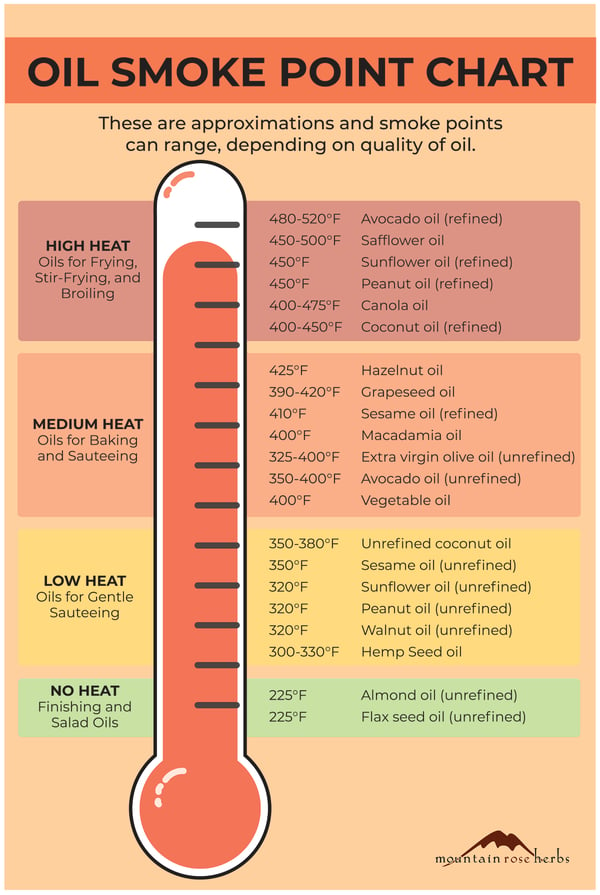Exploring the Best Oils for High-Temperature Cooking
Choosing the right oil for cooking at high temperatures doesn’t just influence the flavor of your dish; it also affects health and safety. When oil is heated beyond its smoke point, it can break down, forming harmful compounds and affecting the taste. Therefore, understanding which oils can withstand high temperatures while maintaining their integrity is crucial for any avid cook.
Understanding Smoke Points

The smoke point of an oil is the temperature at which it begins to smoke and break down. This is crucial because oils with higher smoke points are more stable and better suited for high-heat cooking like frying, searing, and stir-frying. When oils are heated past their smoke point, they can release free radicals and acrolein, a compound that offers an unpleasant burnt flavor. Thus, choosing an oil with a high smoke point is essential for both flavor and health.
Olive Oil: A Versatile Option
Extra virgin olive oil is renowned for its health benefits, but its relatively low smoke point makes it unsuitable for high-heat cooking. However, refined olive oil, often labeled simply as "olive oil," has a higher smoke point, around 465°F (240°C), making it a suitable candidate for medium to high-heat applications. It retains a mild flavor, ideal for not overpowering dishes while providing a boost of healthy monounsaturated fats.
Canola Oil: A Balanced Choice
Canola oil is often praised for its neutral flavor and health properties. It has a high smoke point of approximately 400°F (204°C), making it a solid choice for many types of cooking, including frying and baking. Rich in omega-3 and omega-6 fatty acids, canola oil offers a balanced nutritional profile while remaining cost-effective. Its light flavor is perfect for dishes where the seasoning takes center stage.
Avocado Oil: The Nutrient Powerhouse
For those seeking an oil that can handle higher temperatures without sacrificing nutritional benefits, avocado oil is an excellent option. With a smoke point of about 520°F (271°C), it is one of the best oils for high-temperature cooking. Avocado oil is packed with heart-healthy monounsaturated fats and antioxidants, making it a health-conscious choice that doesn’t compromise on performance. Its subtle buttery taste can enhance various dishes, making it both a delicious and nutrient-rich option.
Peanut Oil: The Frying Favorite

Peanut oil is a popular choice for deep frying due to its high smoke point of around 450°F (232°C). Its unique, slightly nutty flavor can add an interesting twist to dishes. Peanut oil is also known for not absorbing the flavors of the foods cooked in it, allowing for reuse after filtering. This makes it not only practical but also economical for large-scale cooking endeavors.
Grapeseed Oil: A Chef’s Secret
Grapeseed oil, with a smoke point of about 420°F (216°C), is another excellent contender for high-temperature cooking. Extracted from grape seeds, this oil is appreciated for its light taste and versatility. It doesn’t overpower the flavor of dishes, making it a preferred choice among chefs for sautéing and frying. Additionally, its high content of polyunsaturated fats is beneficial, though it’s important to balance it with oils richer in monounsaturated fats.
Conclusion
The choice of oil can significantly impact both the taste and healthiness of your food. Oils with high smoke points are a better fit for high-temperature cooking, reducing the risk of creating undesirable flavors or harmful compounds. Whether it’s the robust nutrient profile of avocado oil or the cost-effectiveness and versatility of canola oil, selecting the right one depends on your specific needs and cooking goals. Prioritizing oils that can withstand high heat ensures your dishes are not only flavorful but also safe and healthy. When choosing your cooking oil, consider flavor, health benefits, and how well it suits your cooking style.













